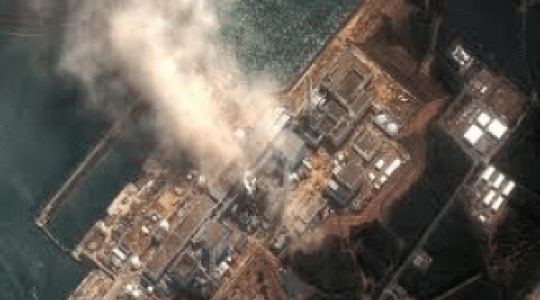 The news about Japan’s nuclear crisis gets worse with each dribble of information from a reluctant bureaucracy. The chief risk Wednesday was that spent nuclear fuel rods in enormous storage pools would boil away the water that shields them, setting the waste on fire to spew highly radioactive particles into the wind.
The news about Japan’s nuclear crisis gets worse with each dribble of information from a reluctant bureaucracy. The chief risk Wednesday was that spent nuclear fuel rods in enormous storage pools would boil away the water that shields them, setting the waste on fire to spew highly radioactive particles into the wind.
Yet in Washington, Energy Secretary Steven Chu was telling Congress that the U.S. nuclear industry is safe from similar disaster, and sees no reason to hold up new nuclear reactor permits.
If this is the level of concern at the White House, the states will have to take the lead in reassessing what “safe” means. The disaster in Japan has upended a lot of assumptions about nuclear plants, including that protecting the reactor is the chief, even only, concern. For instance:
- The loss of power and backup power to pump coolant water–not direct earthquake damage–was the primary trigger for Japan’s crisis.
- Pools of spent fuel like those in Japan are the common storage method in the U.S. They are far less protected from a terrorist act than reactors, according to a 2003 Harvard study. The pools also contain many times the radioactive punch of a reactor core, because of greater volume. A 1997 study by the Brookhaven National Laboratory , cited in the New York Times, described a worst-case disaster from uncovered spent fuel in a reactor cooling pool. It estimated 100 quick deaths would occur within a range of 500 miles and 138,000 eventual deaths.
- U.S. nuclear plants are similar in most ways to Japan’s: boiling water or cool water reactors. Their spent fuel is stored in a pool outside the containment dome of the reactor, kept under tens of feet of water that must be continually circulated and cooled.
- The most at-risk reactor in Japan, Fukushima No. 1, is an aging General Electric Mark 1 model. There are 23 of the same model across the U.S, the oldest of them built in 1971. Their reactor containment vessels are built more cheaply and considered less safe than newer designs.
- It doesn’t take an 8.9 earthquake and tsunami to take out power and kill backup generators. A lesser quake or a powerful Pacific typhoon might do it to California Edison’s coastal San Onofre plant or PG&E’s Diablo plant.
- Human error worsened Japan’s crisis. From the Los Angeles Times:
Engineers had begun using fire hoses to pump seawater into the [Fukushima] Unit 2 reactor — the third at the plant to receive the last-ditch treatment — after the emergency cooling system failed. Company officials said workers were not paying sufficient attention to the process, however, and let the pump stall, allowing the fuel rods to become partially exposed to the air.
Once the pump was restarted and water flow was restored, another worker inadvertently closed a valve that was designed to vent steam from the containment vessel. As pressure built up inside the vessel, the pumps could no longer force water into it and the fuel rods were once again exposed.
- Emergency systems are only as good as the plant operators. And at the San Onofre plant in San Diego, the Nuclear Regulatory Commission cited the plant on March 8, for the fifth time in two years, for poor training and sloppy enforcement of safety procedures. Among the citations, as reported by the North County Times: “[A] worker trained to watch for fires at the plant had falsified logs and skipped some hourly rounds on several occasions, dating back to 2001. Other incidents included a failure to properly connect batteries used to start backup diesel generators; a nuclear fuel assembly inserted in the wrong slot inside one of San Onofre’s spent fuel pools; and, more recently, a report of work performed on the wrong cooling pump at the plant.”
Yet the NRC has repeatedly concluded that safety at the plant was “not compromised.” Assuredly San Onofre is not the only plant with human error, but it’s worth noting because its operating license is currently up for renewal with the state Public Utilities Commission.
It’s up to the PUC to do what the federal government won’t: demand much tougher operating and safety standards, and shut down San Onofre at least until every one is met.









